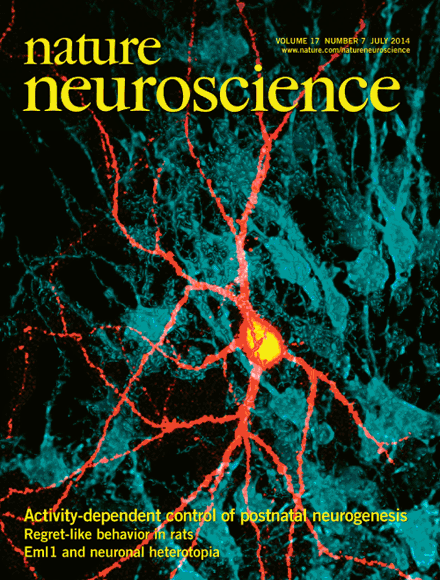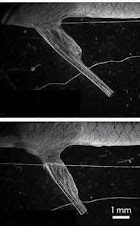Fukushima Crisis: Radiation exposure, beyond the numbers - March 15, 2011
 This morning, I awoke to a press conference by Chief Cabinet Secretary Yukio Edano rattling out a string numbers on radiation exposure (dutifully recorded in my previous post). This post is intended to explain what these numbers actually mean.
This morning, I awoke to a press conference by Chief Cabinet Secretary Yukio Edano rattling out a string numbers on radiation exposure (dutifully recorded in my previous post). This post is intended to explain what these numbers actually mean.
Radiation
Radiation is the generic term given to whatever comes out of heavy atoms when they decay or split apart. It is actually confusing because there are three very different things that can be produced:
Alpha radiation, in which an atom releases a helium nucleus.
Beta radiation, in which an atom releases an electron.
Gamma radiation, in which the atom releases an energetic light particle like an x-ray or gamma-ray.
In the case of the Fukushima situation, there are two major isotopes to worry about. The first, caesium-137, is a gamma emitter. The second, Iodine-131, is a beta emitter.
Sieverts
Because the term "radiation" applies to three different processes, it is not straightforward to figure out how it will affect the body. Gamma radiation is the one that most people probably think about when they think of radiation. This is the powerful stuff that can go through your body, and is used in a lot of medical imaging. It will hurt you for the time you're exposed to the source, but once you leave the area, there is no further risk.
By contrast, alpha and beta radiation cannot penetrate far beyond skin or clothing. These latter types are completely harmless if you're properly protected, but if you ingest or inhale some of the material, it has the potential to make you very ill. That is because once you have taken on alpha or beta radiation, there is no way to escape its effects. It's a bit like carrying an x-ray machine in your chest. Iodine-131 is particularly dangerous because it is readily absorbed by the thyroid and can cause cancer. (It's worth noting that caesium-137, though a gamma emitter, can also be absorbed by the body).
To try and simplify radiation measurements, the international community has introduced the Sievert (Sv). It is actually a complicated quantity to compute, but it attempts to weight the various risks and provide a net value for the biological effects of the radiation detected, no matter the type. A millisievert (mSv) is a thousandth of a sievert, a microsievert (μSv) is a millionth of a sievert.
Exposure
One of the most important and misunderstood aspects of radiation is that the effects are cumulative. That means that when thinking about health effects, the time of exposure is just as important as the dose. For example, the average person receives about 1-2 mSv per year without any bad effects, but if they received a does of 1-2 mSv/minute they would become sick in less than a day.
The peak doses recorded at Fukushima Daiichi have been around 400 mSv per hour, enough to induce radiation sickness in about two hours' time. (That said, the radiation levels appear to be falling, so the situation may not be so bad).
Consequences
One of the most frustrating things has been the lack of information about the various exposure risks. Nowhere on the International Atomic Energy Agency website or elsewhere have I been able to find a clear table of the effects from acute exposure to various levels of radiation (if somebody has one send it my way). The closest thing I've dug up is this table from the World Nuclear Association. It says an instantaneous dose of 1,000 mSv, or 1 Sv, is enough to induce nausea and decrease your white blood-cell count. 5,000 mSv would cause death for 50% of those exposed in a matter of months. 10,000 mSv is guaranteed to be fatal within weeks.
Safety
The safest thing you can do is stay away from radiation. For this reason the government has evacuated some 180,000 residents from 20 kilometres around the Fukushima Daiichi station. Although weather can affect how radioactive debris travels, cities like Tokyo are far enough away to be safe at this stage even if trace amounts of iodine and caesium are detected.
The second safest thing you can do is stay in doors, to prevent exposure to alpha and beta radiation that can't penetrate the building. This morning, the government recommended that residents within 30 km of the plant avoid going outside. Those who do leave their houses would do well to cover up, and change clothes after entering the house (to avoid spreading radioactive dust).
As an added safety measure the government has distributed potassium iodide tablets. These tablets flood the body with safe iodine, preventing the uptake of the dangerous iodine-131.
The good news about radiation is that it decays over time. Iodine-131 has a half-life of 8 days, meaning that it will be half as radioactive after about one week and a quarter as dangerous after two weeks. Caesium-137 has a half-life of 30 years, so it will be around much longer.
Image: An official scans for signs of radiation on a woman in Nihonmatsu City in Fukushima Prefecture March 13, 2011 / REUTERS/Yomiuri Shimbun

















































































